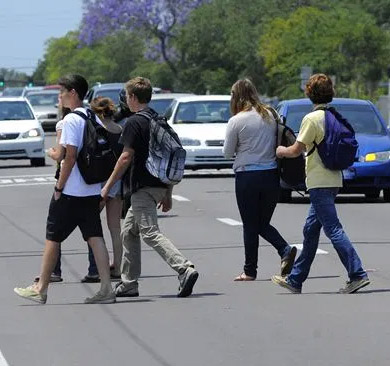Our roadways and how they fail us
People want (and need) alternative transportation
Whether investing in the local economy, increasing property values, improving health & fitness, or just enhancing our sense of community, alternative transportation infrastructure offers many demonstrable benefits to an area. Still, safe access to alternative transportation infrastructure isn’t just a “want”. To thousands in the Souhegan Valley, it’s a vital need.
Although car ownership is very common in the United States, there are many Americans who do not own a vehicle or are unable to drive. Eighty million Americans—approximately 25% of the population—are disabled, too young, too old, or too poor to drive. Families with an annual income of less than $25,000 are nine times more likely not to own a car than families with an income of more than $25,000. If automobiles are the only feasible mode of transportation, these groups are placed at a great economic and social disadvantage because of the reduced accessibility to services and social networks.[efn_note]National Recreation and Park Association. 2016. “Active Transportation and Parks and Recreation.” Ashburn, VA.[/efn_note]
The Souhegan Valley is not immune to these same needs. Among the residents of the Souhegan Valley 3,000 households have no access to a personal motor vehicle. The necessity of alternative transportation options for a population of this size may come as no surprise, but evidence for this need can easily be found in the region. In some areas, especially in the vicinity of more densely populated residential complexes, pedestrians have even created makeshift paths along the side of the road.[efn_note]Nashua Regional Planning Commission. 2002. “Route 101a Corridor Master Plan and Improvements Program.” Nashua. [/efn_note]
Alternative transportation allows easy access to parks, libraries, schools, clinics/hospitals, full-service grocery markets, and one’s home and place of employment. Poorly maintained or developed active transportation infrastructure can force people to walk and bike unsafely, or simply not make the trip at all.[efn_note]National Recreation and Park Association. 2016. “Active Transportation and Parks and Recreation.” Page 11. Ashburn, VA.[/efn_note]
It’s dangerous to bike and walk on our roads, and getting worse
Bicyclist and pedestrian deaths in the United States by year[efn_note]National Highway Traffic Safety Administration[/efn_note]
[visualizer id=”3148″ lazy=”no” class=””]
This is happening because our streets, which we designed for the movement of vehicles, have not changed to incorporate other alternative transportation modes. In fact, we are continuing to design streets that are dangerous for all people, in the name of optimizing the flow of motor vehicles. Furthermore, federal and state policies, standards, and funding mechanisms still produce roads that prioritize high speeds for cars over safety for all people.
To reverse this trend and save lives, we need to protect all users of the transportation system through our policies, programs, and funding. A significant first step for such an effort would be to develop an alternative transportation corridor through key areas of the region.
Today, the only way to get from A to B is by road (but it doesn't have to be!)
Unfortunately, roads in America are designed for the movement of motor vehicles and the incorporation of alternative modes of transportation is rarely a consideration in their design. Take a moment and picture the routes you take in your daily life… to work, school, the grocery store, to visit friends or family. How would you get there? Is it even possible to get there without a motor vehicle? If so, would you feel comfortable or safe using an alternate mode of transportation to get there? Do you think it would be safe and comfortable for other people, including children, to make that journey?
Even along the most major transportation corridors in the Souhegan Valley region, the availability of alternative transportation infrastructure is fractured, restrictive of most modes of transportation, and often absent altogether. Our neighbors are therefore faced with these same questions, resulting in an unfortunate decision: either risk one’s personal safety by using roads designed solely for high-speed, high-volume, motor vehicle use; or forgo the notion of multimodal transportation and rely entirely on motor vehicles for transportation.
This is a false dichotomy. We don’t have to choose between risking life and limb or complete dependency on motor vehicles. By investing in alternative transportation infrastructure in the Souhegan Valley, we are investing in the safety and quality of life of each other. Negotiating busy streets is not the only option.

